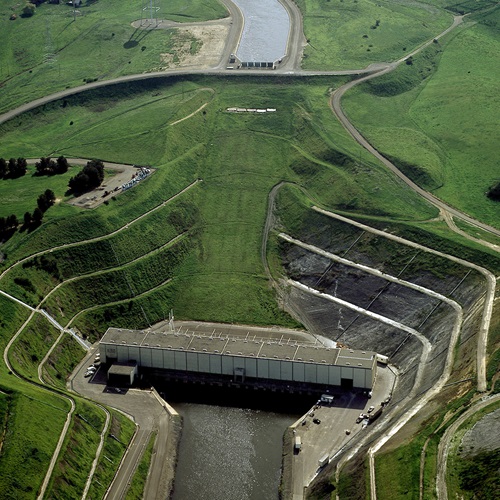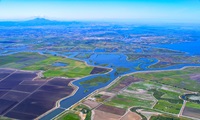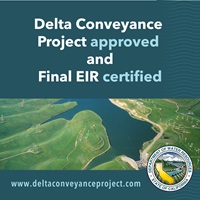DWR has released a comprehensive new assessment of water conveyance in the San Joaquin Valley – home to more than 4 million Californians and one of the nation’s most important agricultural regions.


An aerial view of the Harvey O. Banks Delta Pumping Plant, the first major plant designed and constructed within the California State Water Project.
Delta conveyance refers to State Water Project (SWP) infrastructure in the vast network of waterways comprising the Sacramento-San Joaquin Delta (Delta) that collects and moves high-quality, clean, safe and affordable water to homes, farms and businesses throughout major regions of the state from the Bay Area to Southern California. The Department of Water Resources (DWR) is the owner and operator of the SWP and is responsible for all associated upgrades and maintenance, including the Delta Conveyance Project that will modernize this water transport infrastructure in the Delta.
View this Story Map for more information on several key aspects of the Delta Conveyance Project.
The Delta is at the center of California’s vital water distribution system. Two-thirds of California’s water originates in the Sierra Nevada mountains. eventually flowing through the Delta, where, consistent with water rights, including applicable water quality requirements, it is delivered to more than 27 million Californians and about 750,000 acres of farmland. The infrastructure that enables conveyance of California’s primary water supply is critical to the health of local communities and the success of our state’s economy.
California faces a future of water instability, more rain, less snow, and more frequent extreme events like drought and flood. These changes will reduce the ability of the SWP’s current infrastructure to capture water, especially because there will be less snow and snowmelt available.
The Delta Conveyance Project is an essential climate adaptation strategy. It protects against future water supply losses caused by climate change, sea level rise, and earthquakes. It also helps ensure that the SWP can capture, move and store water to make the most of big, but infrequent, storm events.
View more frequently asked questions related to the Delta Conveyance Project.
Information and resources related to some of the more critical environmental compliance and permitting processes that must be completed prior to construction and operation of the Delta Conveyance Project can be found at www.deltaconveyanceproject.com.

DWR has released a comprehensive new assessment of water conveyance in the San Joaquin Valley – home to more than 4 million Californians and one of the nation’s most important agricultural regions.

When two of every three Californians pay their water bills each month, they pay for reservoirs and aqueducts that were designed for them a half century ago.

DWR released a benefit-cost analysis for the Delta Conveyance Project that finds the infrastructure modernization project would create billions of dollars in benefits for California communities, including reliable water supplies, climate change adaptation, earthquake preparedness and improved water quality.

The Department of Water Resources (DWR) today approved the Delta Conveyance Project, a modernization of the infrastructure system that delivers water to millions of Californians.